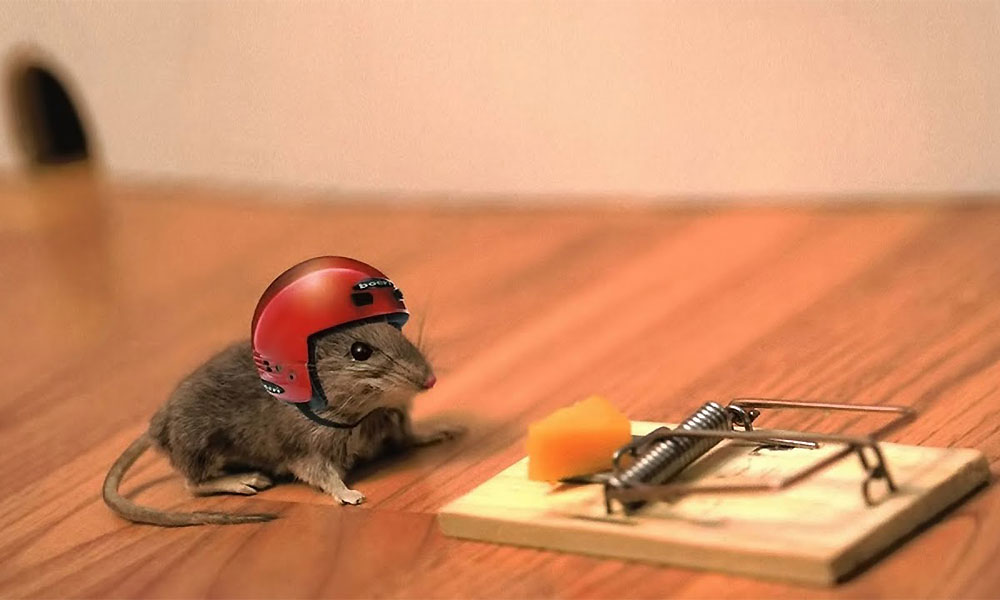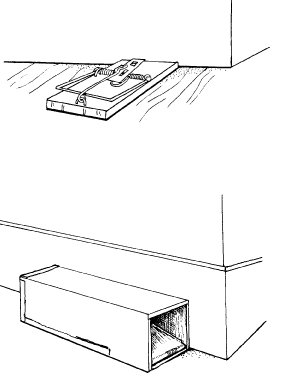
How do I set a mouse trap? Where do I put it? What do I use for bait?
These are all questions that we often receive from people trying to capture a pesky rodent invader. While trapping can be a trial and error process, there are several guidelines and principles that will increase your success.
Placement of a trap is crucial in your chances of success when trying to trap any animal, especially a mouse. To trap the animal we need to find when there animal is most active and areas where it travels frequently. In help with finding this information please refer to the article on Signs of Mouse Activity. Once these areas are located you will have the most success by placing traps along travel ways and adjacent to burrows or chewed holes in walls, baseboards, etc.
Trap Placement:
Place traps along a wall with the trigger or entrance to the trap on the side of the trap directly against the wall. This techniques works because mice and all rodents are more likely to travel along the edges of a room before they travel through the center. Movement along the edges of rooms makes a rodent feel less vulnerable because it only has to watch for predators on one side of its body and can often escape into a hole in the wall or up a corner. These pictures show examples of both proper and improper trap placement.
Correct Placement

Place traps along walls with the trigger or entrance on the side closest to the wall.
Incorrect Placement


Do not place a trap where one end is covered or where sight through the tap is blocked.
Baiting:
Do I need to bait my trap?
Once you have selected a suitable location to place your trap now you need to consider your baiting options. Baiting a trap in a well placed location is not always necessary but it will generally increase your trapping success. In situations where you are having difficulty trapping or you are dealing with a population that has been trapped heavily before, pre-baiting the traps is recommended. Pre-baiting is a technique that involves placing bait on a trap this is not yet set to get the rodents comfortable feeding and visiting the trap location. Why would you want to offer rodents a free meal you might ask? Research has proven that this technique can increase your trap success and lessen the chances that the rodents you are trying to capture will become “trap shy” or exhibit “neophobic” (fear of new objects) reactions. Once you have rodents visiting your traps for several nights then you can set the traps and your chances of catching rodents will be greater.
What can I use for bait?
Every seasoned trapper has a favorite bait to use and the best bait can vary from area to area and even seasonally. Peanut butter is a tried and true bait for rodents as it provides a good aroma and high calories with its oily base. If your rodents are used to feeding off other items such as animal feed, fruits, or stored products these can also work well. The tropical roof rat (Rattus rattus) seem to be particularly fond of cut apples and fruit. Remember to plaice your bait in a manner that will require the rodent to trigger your trap!
Good luck!


